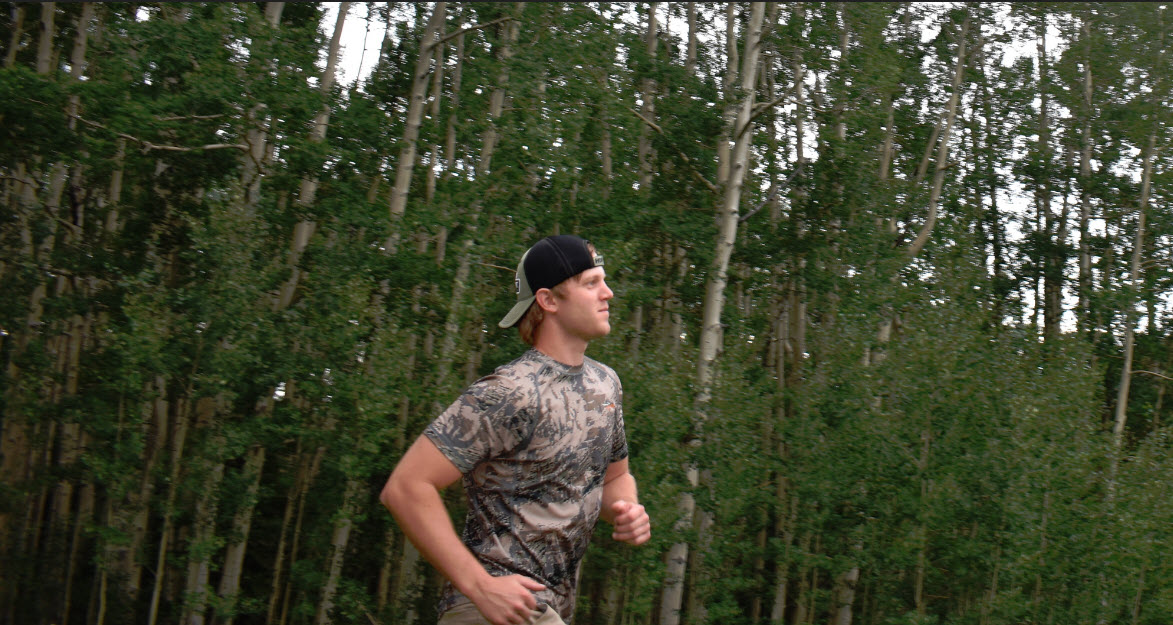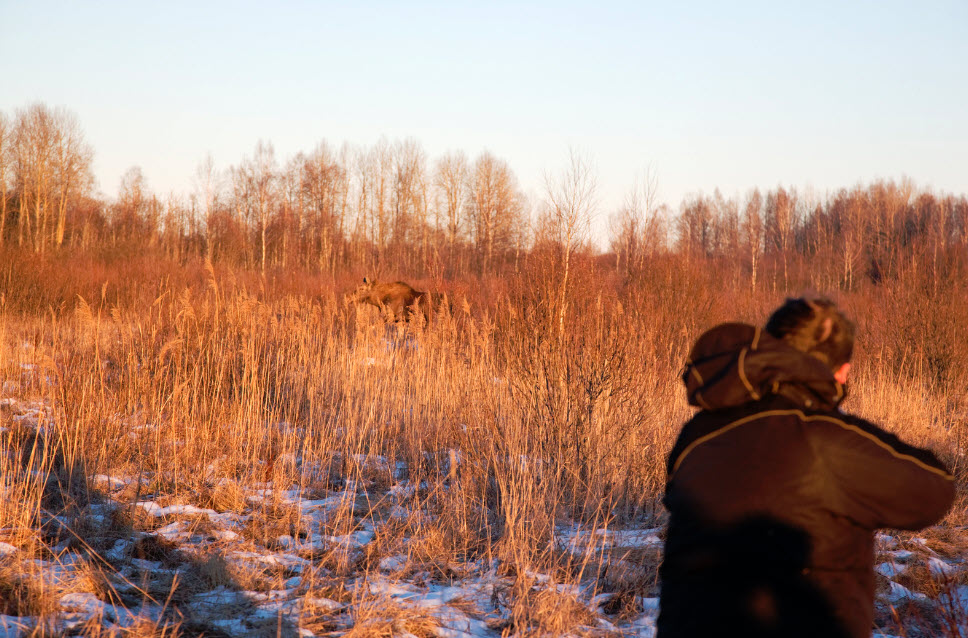
Image credits.
Hunting is challenging, but elk hunting is plain difficult. It puts your hunting gear to test and drains your emotions and body at the same time. No matter the technology you bring in the field, hunting is and always will be a primal match between you and your game. Sure, you can put on the proper boots, the best hunting gear, or the most reliable hunting backpack, but none of them will be of any use when you’re not in a good physical and mental shape.
Inexperienced hunters skip the preparations in the offseason and don’t keep up with the many demands of elk hunting. Some are so out of shape that they cannot even enjoy the hunt. Experienced hunters, though, know that training offseason gives results when you’re going after your game. To each, their own; each person’s “peak form” may be different. The more serious you are about hunting workouts and fitness, the higher your chances of getting a shot in the season.
Page Contents
Why do you need to be in shape for elk hunting?
Unless you live in a state like Colorado, where the elevation goes to around 6,800 ft. above sea level, you should train for elk hunting. Otherwise, you will be at a disadvantage when the elk season begins. Rugged terrain and elevation are some of the many challenges of elk hunting.
Experienced elk hunters agree that the hunt is more adventurous and rewarding the farther you get from roads. Being in excellent physical shape is crucial for a successful hunt, but you also need to be mentally prepared. Staying focused for so many hours requires a strong will and commitment. At times, you may have to make crucial decisions, and being mentally strong will help make the best decisions. All in all, elk hunting isn’t only about how great you are at archery. It’s also about being strong and fit, both physically and mentally.
How should you get in shape for elk hunting?
As a hunter, you need to be many things, and being detailed-oriented is one. You need to pay attention to most minute details and be efficient when organizing your hunting equipment. From learning how to pack your backpack to breaking in your hunting boots, there are only so many things to consider before you go hunting.
When we talk about getting in shape for elk hunting, we also need to be meticulous. You don’t just run or lift weights for elk hunting; you should be organized and have a plan. we have some suggestions when it comes to preparation for elk hunting.
Weighted step-ups
When you hunt elk, it’s only a matter of time until you have to climb uphill under a heavy load. A good exercise is to load a pack and practice climbing up and downhill; another efficient method to train your legs is weighted step-ups. You can do it three times a week; start two months before elk hunting.
Three principles are crucial:
- Sixty seconds on/30 seconds rest. You need to repeat 20 to 30 times, for 30 minutes
- 600-800 step-ups is your goal
- Do as many as you can in 30 minutes
You don’t need to go to the gym to do this workout. A box/platform (16 in tall) is enough. Don’t forget to put on your backpack and use a tally counter (you may lose count). Also, wear your hunting boots to break them in and make them comfortable for the hunt.
Step-ups are great for preparing you for the steep climbs when going after your elk.
Running
Many things help you succeed in your elk hunting, and cardiovascular endurance is one. The rugged terrain and elevation strain your body, and you have to train your lungs and heart for the challenges of bow hunting. Therefore, you should start slowly and get stronger gradually. We suggest you run 2 to 3 times a week in the spring and summer and run 3 to 8 miles as the season approaches.
Keep in mind that you’re not preparing for the Olympics. Your goal is to get your lunges and heart used to work for a long time. On a longer run, 8 to 9-minute mile pace is good enough. Go for under 7-minute miles for the shorter run.
Ruck marching
Military professionals call the pack hikes “rucking” or “ruck marching.” Practicing this exercise benefits you on many levels. First, it’s a great way to figure out how your pack works for your body; it gives you an idea about packing it more efficiently for hunting. The last thing you want on your hunt is getting a shoot and not knowing how to carry your game.
Another benefit of rucking is that you can examine where and how to pack the load most efficiently. The rule of thumb is to center the weight and balance it toward the top; it should be in the middle of your shoulder blades.
When you go rucking, your body gets used to the physical strain after your hunt. Some hunters ruck two to three times a week; you should play with different pack weights and vary the walking speed. You can try to pack lightly one day (40 pounds) and walk a 15-minute mile pace. Other times, try rucking with 70 pounds at a slower pace. You also need to practice running; start with 2-3 mile hikes and work your way up to 6 to 8 miles.
Don’t stress about having a particular pace on the heavyweight runs. You aim to get your body used to the strain of carrying the elk. Also, don’t forget to practice with your hunting boots on.
Hydration
When you’re not hydrated, you get frustrated and unable to focus. You cannot carry several water bottles when elk hunting, so a backpack with a hydration bladder is ideal. You need 100 to 130 ounces of water a day, to say the least. When you go elk hunting, the physical exertion is massive so you must stay hydrated. You should also pack electrolyte drinks along with the water supply. Hydration at elevation can make a difference for your shoot; you don’t want to miss your shot because of being thirsty.
12-week plan to get in shape
It goes without saying that you get to decide which exercises, how often, or how intensely to prepare for your elk hunting. But, at the same time, we know that our suggestions are helpful for inexperienced hunters. We were all once new hunters, after all.
Week 1
You should start easy, so you don’t injure your joints and tendons.
Mon/Wed/Fri- work your cardio. A 45-minute walk, with up and down terrain, is a good exercise for your heart and lungs.
Tues/Thurs/sat- work your muscles. Climb up and down for half an hour on a steep hill or some stairs. Don’t forget to rest from time to time.
Week 2
You may now step up your game a bit.
Mon/Wed/Fri- it’s again your cardio routine with short stints of jogging along with your walks.
Tues/Thurs/sat- keep your routine for muscles, and try to include shorter breaks.
Week 3
It’s now time to begin to focus.
Mon/Wed/Fri- do less walking and start jogging more.
Tues/Thurs/sat- keep your 30-minute routine, but add three lunges and three squats. Don’t use weights just yet. Do the squats and lunges alternately during the break.
Week 4
By now, you should experience less strain as your body becomes more robust than before. Try not to get injured.
Mon/Wed/Fri- you should be able to jog for 45 minutes now.
Tues/Thurs/Sat- climb the stairs/hill for half an hour. Don’t forget to switch from five squats to five lunges every couple of minutes. Rest at the ten and twenty-minute marks.
Week 5
By now, you shouldn’t have any problem whatsoever during your workouts.
Mon/Wed/Fri- begin with a bit of warming up, sprint for two minutes, then walk. Could you do it for 45 minutes?
Tues/Thurs/Sat: put on your pack with 20 pounds of weight in it. Rest as often as you need.
Week 6
You should be able to call yourself a good athlete by now.
Mon/Wed/Fri- you need to jog again, but increase your pace.
Tues/Thurs/Sat-train your muscular strength by hiking and doing five crunches/lunges every five minutes. After that, you shouldn’t have breaks anymore.
Week 7
Mon/Wed/Fri- alternate sprinting and walking; do it as intensely as you can.
Tues/Thurs/Sat- add five more pounds to the pack and follow your routine for muscle strength.
Week 8
You get to pace down a bit.
Mon/Wed/Fri are for cardio, as usual. You should jog in a relaxed way for 45 minutes and avoid sprinting.
Tues/Thurs/Sat are for muscular. Follow the week7 routine, but add your rifle/bow (empty, of course).
Week 9
You won’t be long until you’re done.
Mon/Wed/Fri- it’s time to go back to sprinting and walking; push yourself as much as you can.
Tues/Thurs/Sat- you need to add more load. Your pack should weigh 30 pounds plus the rifle/ bow. Again, keep your eyes on the target.
Week 10
It’s time for some home stretch; there are only three weeks until the elk hunting season begins.
Mon/Wed/Fri- run, but keep it relaxed.
Again, Tues/Thurs/Sat- add five pounds to your pack and stick to your previous routine. By now, your pack should weigh 35 pounds, which is almost the weight of a 3-day hunting backpack. Please don’t skip the squats and lunges, as they’re crucial for climbing and crouching when stalking your game.
Week 11
It’s time to start packing or at least writing down your list.
Mon/Wed/Fri- you shouldn’t have any difficulties when walking and sprinting.
Tues/Thurs/Sat- don’t stop adding the 5-pounds weight. Your muscles should be robust enough to handle it, and your legs should be stronger than ever.
Week 12
You’ve done it! You’re ready for the big elk hunting!
Mon/Wed/Fri- don’t give up on your solid and relaxed running.
Tues/Thurs/Sat: no more adding weights, only stick to your routine.
One last piece of advice
Is it possible to kill an elk without physical preparation? For sure, yes. However, if you’re coming from out of state, you will hunt against resident hunters who are (at least) better adjusted to the climate. They also have a better understanding of the terrain and game.
Above all, physical train counts for mental strength. With elk hunting, it’s all about who can stay in the field for the longest time. Hiking up and down mountains with a heavy pack and bow is complex and can become painful. However, if you are strong and can stay focused every step of the way, you have a more positive approach and energy to keep going after your game.
When you go elk hunting, you need to benefit from every possible advantage and be ready for whatever elk hunting throws at you. One thing to know about elk hunting is that you should always be prepared for the unexpected!







